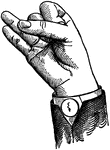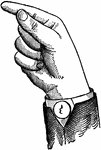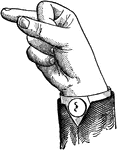Indicated Glides
This ClipArt gallery offers 24 illustrations of sign language phonetics, showing indicated glides as published by Edmund Lyon of the Deaf-Mute Institution in 1891.

Indicated High Primary Back Glide
Glides are only transitional sounds. They are intermediate to Consonants and Vowels, combining the characteristics…

Indicated High Primary Lip Glide
Glides are only transitional sounds. They are intermediate to Consonants and Vowels, combining the characteristics…

Indicated High Primary Point Glide
Glides are only transitional sounds. They are intermediate to Consonants and Vowels, combining the characteristics…

Indicated High Primary Top Glide
Glides are only transitional sounds. They are intermediate to Consonants and Vowels, combining the characteristics…

Indicated High Wide Back Glide
Glides are only transitional sounds. They are intermediate to Consonants and Vowels, combining the characteristics…

Indicated High Wide Lip Glide
Glides are only transitional sounds. They are intermediate to Consonants and Vowels, combining the characteristics…

Indicated High Wide Point Glide
Glides are only transitional sounds. They are intermediate to Consonants and Vowels, combining the characteristics…

Indicated High Wide Top Glide
Glides are only transitional sounds. They are intermediate to Consonants and Vowels, combining the characteristics…

Indicated Low Primary Back Glide
Glides are only transitional sounds. They are intermediate to Consonants and Vowels, combining the characteristics…

Indicated Low Primary Lip Glide
Glides are only transitional sounds. They are intermediate to Consonants and Vowels, combining the characteristics…

Indicated Low Primary Point Glide
Glides are only transitional sounds. They are intermediate to Consonants and Vowels, combining the characteristics…

Indicated Low Primary Top Glide
Glides are only transitional sounds. They are intermediate to Consonants and Vowels, combining the characteristics…

Indicated Low Wide Back Glide
Glides are only transitional sounds. They are intermediate to Consonants and Vowels, combining the characteristics…
Indicated Low Wide Lip Glide
Glides are only transitional sounds. They are intermediate to Consonants and Vowels, combining the characteristics…

Indicated Low Wide Point Glide
Glides are only transitional sounds. They are intermediate to Consonants and Vowels, combining the characteristics…

Indicated Low Wide Top Glide
Glides are only transitional sounds. They are intermediate to Consonants and Vowels, combining the characteristics…

Indicated Mid Primary Back Glide
Glides are only transitional sounds. They are intermediate to Consonants and Vowels, combining the characteristics…

Indicated Mid Primary Lip Glide
Glides are only transitional sounds. They are intermediate to Consonants and Vowels, combining the characteristics…

Indicated Mid Primary Point Glide
Glides are only transitional sounds. They are intermediate to Consonants and Vowels, combining the characteristics…

Indicated Mid Primary Top Glide
Glides are only transitional sounds. They are intermediate to Consonants and Vowels, combining the characteristics…

Indicated Mid Wide Back Glide
Glides are only transitional sounds. They are intermediate to Consonants and Vowels, combining the characteristics…

Indicated Mid Wide Lip Glide
Glides are only transitional sounds. They are intermediate to Consonants and Vowels, combining the characteristics…

Indicated Mid Wide Point Glide
Glides are only transitional sounds. They are intermediate to Consonants and Vowels, combining the characteristics…

Indicated Mid Wide Top Glide
Glides are only transitional sounds. They are intermediate to Consonants and Vowels, combining the characteristics…